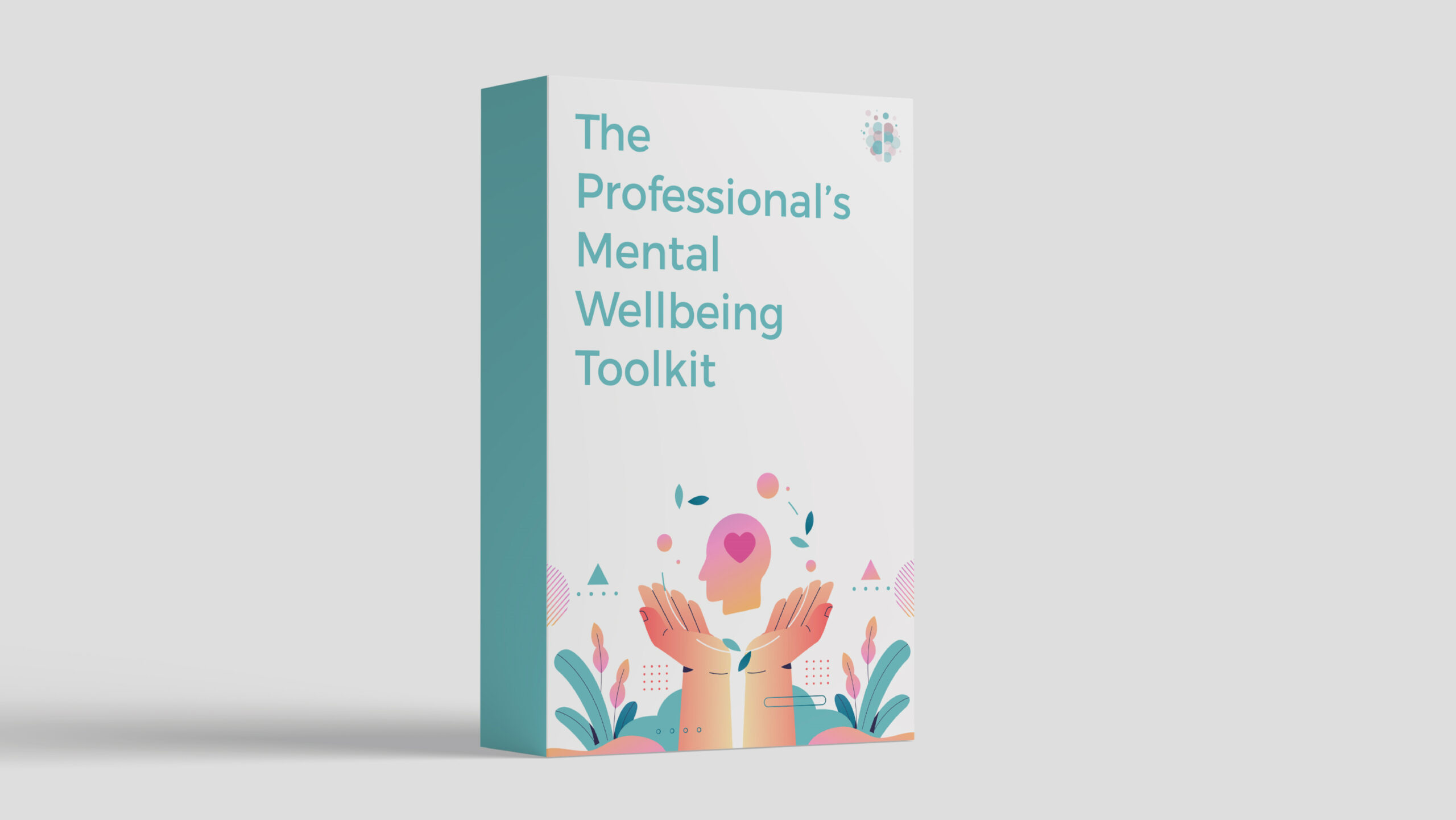Stress can be both helpful and harmful. Some degree of stress can assist us to stay focused and motivated at the task in hand, and a small amount of pressure can be useful to help us to achieve deadlines and prioritise our work.
However, when the pressure begins to feel overwhelming, it can manifest in the psychological and physical symptoms of poor mental wellbeing that we will all recognise.
Some examples of stress symptoms are:
- Difficulty sleeping
- Finding it difficult to concentrate
- Physical symptoms such as chest tightness, headaches or fatigue
We all have our limits in terms of what we can comfortably manage, whether this is at work or at home. One way of thinking about our capacity to manage stress is by thinking of ourselves as a bath that’s being filled with water.
If taps are on full and the plug is firmly in place, the bath is in danger of overflowing. An overflowing bath is like an overflowing brain. This is a good analogy to use to help clients understand when they're not managing their stress well.
In this scenario, people have two choices:
- They can turn the taps off, equivalent to a preventing stress in the first place.
- They can take the plug out and allow some of the stress to drain away, equivalent to taking action to reduce the impact of the stress on their minds and bodies.
In the best-case scenario, people do both, turning the taps off and letting the plug out - both preventing the stress and managing the stress.
There are a number of helpful coaching tools that can be used to reduce and better manage stress levels.
We'll outline two key tools for preventing stress, and four tools for reducing stress.
Coaching Tools to Prevent Stress
1. Practice Saying No
We all want to help people – it’s in our nature to be accommodating and helpful, but sometimes this comes at our own expense. It can also be very difficult to say ‘no’ directly, particularly when others can be used to us always saying ‘yes’ and going out of our way to help.
One strategy is to encourage clients not say ‘no’ explicitly, but to instead practice a few different phrases that feel comfortable to them, for example:
- ‘I'd love to help you, but I can’t do it this week. I'll get back to you when I have some time. In the meantime, is there anyone else you could ask?’
- ‘That sounds great but unfortunately I just can’t take anything else on at the moment, thanks for asking me and best of luck getting someone to help you.’
- ‘I’d love to help, but I’m very busy at the moment. Is there something you’d like me to stop doing instead?’ (This one is particularly useful in a work context.)
By practising phrases with clients in advance, you help them be polite and helpful without committing themselves to more activity which leads to feelings of overwhelm.
Here's a tool you can use with clients who'd like to become more assertive in general: Assertiveness Worksheets.2. The Urgent/Important Strategy
Another coaching tool is the Urgent/Important Strategy, a.k.a. The Eisenhower Matrix.
This method originates from a quote attributed to the former US president Dwight D. Eisenhower: "I have two kinds of problems, the urgent and the important. The urgent are not important, and the important are never urgent."
Tasks are plotted into the following four boxes:- Urgent and Important
- Urgent but Not Important
- Not Urgent but Important
- Not Urgent and Not Important
Support your client to note down their tasks. Immediately, they'll be able to see at a glance where they should be placing their attention and time.
It’s also reassuring for people to realise that some of the things they've been worrying about may fall into the ‘not urgent and not important’ category - try directing their attention to this.
Tasks in this grid can probably be forgotten about and taken off their list for the time being. (Maybe not completely turning the taps off, but at least slowing the flow of water to a more manageable level!)
Coaching Tools to Reduce Stress
1. The 10 Second Pause
Learning to relax is a skill in itself, but the good news is that it can be taught. You as a coach are in a great position to help clients cultivate their mental wellbeing skills - an incredibly rewarding role!
The '10 second pause' is a technique that you can easily teach. It can be used anywhere multiple times a day to allow people to reset your minds and not become overwhelmed.
Here are the instructions:
- Put both feet flat on the floor and sit up straight
- Breathe in slowly and gently through the nose to the count of five, expanding your abdomen as you do so (place one hand on your belly button if this help, you should feel your tummy move and your hand move outwards)
- Breathe out slowly, again to the count of five, taking notice of the stretch in your spine
- Repeat a couple of times
Inform clients that if they do this at the beginning and end of each task, they'll find it helps them prepare for the next part of the day.
The best part is that people can do this without anyone even noticing. It can be done stuck in traffic or on a zoom call!
Mark Williams is the author of the popular book Mindfulness: A practical guide to finding peace in a frantic world. He has a Spotify playlist which features a Breathing Space Meditation which you can also signpost clients to.
2. Anchoring
Anchoring is another strategy you can introduce to clients. Instruct them to close their eyes and think of a time and place in their life when they felt very calm, relaxed and at peace.
Encourage them to recall this scenario in a much detail as possible, thinking about what was actually happening – any sounds, smells and other sensations.
While they're recalling this, ask them to create a small gesture that they can link to this event – for example, rubbing the back of one hand with the thumb of the other or tapping a couple of fingers together.
Ask clients to try to link the gesture with the recall of the event as strongly as they can. When they find themselves in a challenging situation, they can repeat the gesture and it should help them to recall the event, helping them feel calmer and more in control. Note that this is a helpful strategy but requires time and practice to be most effective.
3. Journaling
Journaling can be extremely helpful - often we’re too quick to forget about how well we dealt with a situation in the past or which tools and techniques helped us.
By recording how we managed a situation, we have things to refer back to that can help us to deal with similar situations in the future. Let clients know that getting into the habit of writing a short summary of how they managed a situation every day can be very helpful. They'll soon build a repository of useful tools and techniques that can support them through challenging times.
4. Circle of Influence Tool
Another useful tool for helping clients reduce stress is the Circle of Influence. Many of the things that cause the most stress in our lives stem from scenarios that are outside of our control.
This simple coaching tool allows you to help clients identify things that are:
- Directly within their control and over which they exert influence and can make their own choices about how to proceed
- Those things that are within their sphere of influence and which although not directly within their control, they have some influence over
- Those things that sit entirely outside their sphere of influence or control and therefore they need to develop a strategy for dealing with the outcome
This strategy involves three circles.
In the inner circle, instruct clients to write the things they directly control and influence, for example:
- What I choose to focus on
- My actions
In the middle circle, instruct them to write everything they have some influence over but which they don’t directly control, such as:
- My health
- My income
In the outer circle, tell them to write down everything that’s worrying them but over which they have no control or influence, for example:
- The news
- The economy
Once everything is written down, it soon becomes apparent that wasting time and energy worrying about things they can neither control or influence is pointless. It then becomes much easier to accept this and to move on from worrying about them.
You'll find The Circle of Influence Worksheet, The Eisenhower Matrix, and much, much more in our premium toolkit.
As mentioned, we know from customer research that people crave practical tools. Click here to learn how The Professional’s Mental Wellbeing Toolkit can save you time, energy and money.


About Rebecca
Rebecca is an experienced life and health and wellbeing coach based in the English Lake District. She established Space and Clarity Coaching in 2018 and works with clients to support them to make lasting and impactful changes to their lifestyles and health and wellbeing. She offers both online and face-to-face 1:1 coaching or small group coaching programmes. She originally trained with Barefoot Coaching and also completed a health coaching qualification in 2021. She is a member of the International Coaching Federation and the Personalised Care Institute, which means she is qualified to work as a health coach within the NHS.
You can find more information on her website and Facebook page.



